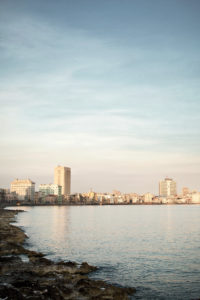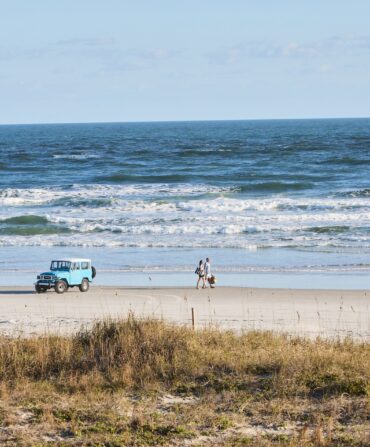Travel
Havana, Cuba: Lost City
On the trail of fine cigars, good food, incomparable daiquiris, and Hemingway’s ghost in Cuba’s capital
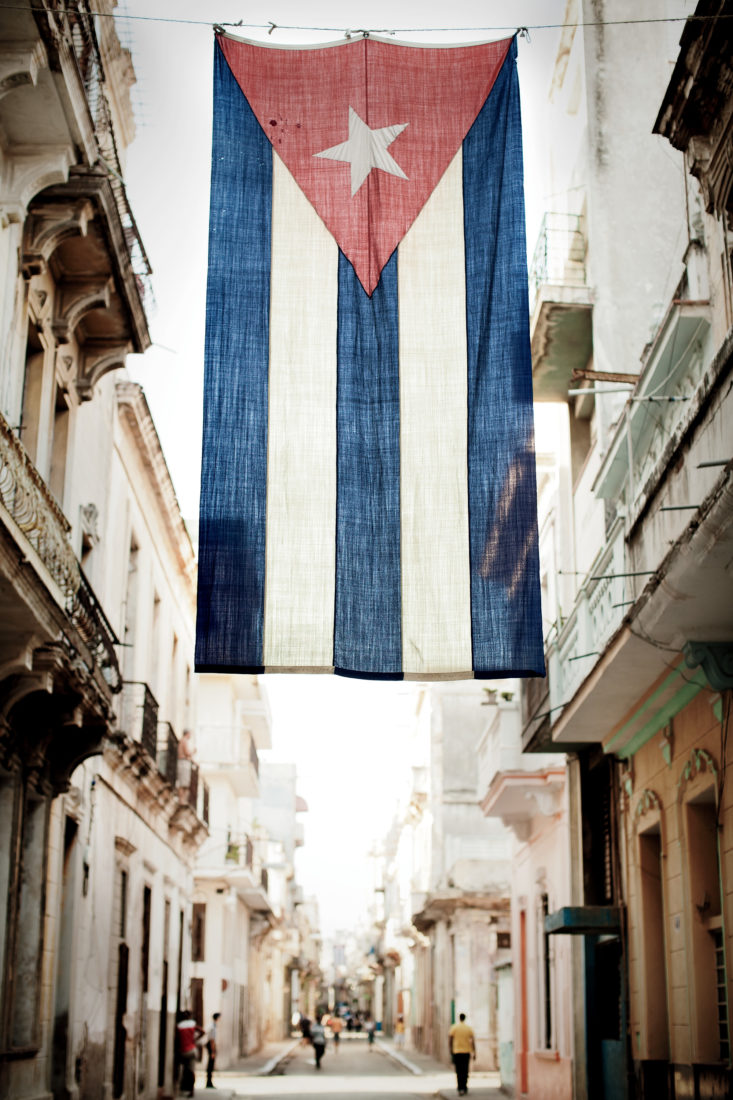
Photo: Eric Kiel
It’s the morning of our second day in Havana, and our little group—my wife, Patricia, our Canadian travel agent and host, Richard French, my friend Ethan, and a handful of others—are on a guided tour of the Partagás cigar factory. Patricia is here out of a quickly fading sense of duty, and Ethan out of mild curiosity. But Richard and I are here because we are consumers and lovers of fine cigars, and this place is the absolute apogee of the cigar-making art, producing three of the world’s five greatest cigars—Cohiba, Partagás, and Montecristo. It’s like visiting a vineyard in Bordeaux that produces not one but three Premiers grands cru classés, and I am a bit beside myself in a weird fog of zealotry and the dislocation you feel when something is so utterly not what you expected.
Founded in 1845, the factory houses six hundred workers on three torrid floors. On the third floor, maybe two hundred “rollers,” 60 percent of them women, sit inches from each other at ancient wooden desks for as long as twelve hours a day in a literal sweatshop. Entering it—like many other experiences in Cuba—makes you feel as if you have stepped through a looking glass into the deep past. Other than a few overhead fans turning hopelessly against the heat, some dim fluorescent lighting, and forties big band music trickling into the gaunt, cavernous room from somewhere, we could have been in a twelfth-century gargoyle factory, so empty was it of cell phones, computers, iPods, or even a machine or modern tool.

Photo: Eric Kiel
The steamy Partagás cigar factory.
Entirely by hand, the rollers strip the veins out of chamois-soft cured tobacco leaves, cut the leaves into filler, press that filler into various cigar shapes, and then roll it into wrapper leaf with the rich nutty color and glisten of Guatemalan coffee beans. The women are dressed mostly in shorts and skimpy tops, the men in muscle T’s and jeans. They work in conditions that would set an American class-action litigator to drooling, earning the average Cuban salary of $10 to $25 a month from the Communist government (which owns the factory, as it does virtually all businesses in Cuba). And yet they are banging out some of the finest capitalist products of their kind on the planet: flawless robustos, torpedos, and double coronas, incomparable Partagás Lusitanias, Montecristo #2’s, and Cohiba Behikes.
Moreover, as we follow our guide around the room, it becomes apparent that they’re doing so not at all with Sisyphean resignation, but with merriment and lust. There is not a single Murmansk scowl or bleak Beijing stare in the place. Instead we have smiles, laughter, and a humid skein of meaningful glances crisscrossing the room. When I mention to our guide that the men and women up here seem…on very good terms with each other, he shrugs and says, “It ees a f**kfest on this floor.”
Yes, I think: That’s exactly what I want to hear about where my stogies come from. A personally valuable realization, but not the Epiphanic Metaphorical Insight into the elusive nature of Havana that I have the odd feeling awaits me in this place. That comes about three minutes later.
Our tour group of about ten people stops in front of a roller putting the finishing touches to a Cohiba robusto. In the group is a slightly dumpy but fresh-faced British girl, and she commences to stare at this roller—raptly, lips pursed, with what could be either profound concern for human rights or desire. Or both. The roller is thin and veiny, with a neat mustache and a sweat-stained shirt. When he notices the girl staring, he locks eyes with her for a full five seconds, his fingers massaging the cigar. Then he gives her a lupine grin, sticks out his tongue, and flicks it up and down.
Welcome to Havana.
We were all hungry after the hormonally charged factory tour, and Richard took us to the right place for lunch: El Aljibe, a jolly open-air restaurant with a thatched roof and tile floors that serves up a highly addictive slow-roasted chicken, along with heaping platters of rice, black beans, and fried plantains.
Here is a wry Cuban joke: “What are the three great triumphs of the Revolution? Health care, education, and baseball. And what are the three great failures of the Revolution? Breakfast, lunch, and dinner.” While those failures are undoubtedly a fact of life for most Cubans, due to unfathomably low salaries and draconian food rationing, we found quite the opposite to be the case for visitors. Cuba has two categories of restaurants—those run by the government, and small private ones, known as paladares, which are often operated out of the owners’ homes and seat no more than ten or twelve. Our best meals in Havana—and we had some excellent ones—were served at paladares, except for lunch that day at El Aljibe, which has my vote for the best government-run restaurant in the world.
Patricia and I spent what was left of the afternoon at the huge artisans’ market on the waterfront in Habana Vieja. Among the hundreds of vendors selling T-shirts, posters of Che and Fidel, and other tourist kitsch, a few offered interesting jewelry, wood carvings, and the Afro-Cuban percussion instruments—Bata drums, bongos, gourd shakers, and the wooden sticks called claves—that are the beating heart of the son, rumba, salsa, mambo, and Charanga music that, as Ry Cooder put it, flows like a river through Havana, that “takes care of you and rebuilds you from the inside out.”
From the market we took a stroll down the Malecón, a soulful oceanside pedestrian walkway that runs four miles from Habana Vieja to the leafy embassy and Batista-era mansion district of Miramar. If there is anything like this promenade anywhere else in the world, I don’t know of it. The Malecón is a sort of 24/7 street theater, featuring entwined lovers, fishermen, minstrels, joggers, chess players, ranters, and a few people gazing hungrily toward Florida, only ninety miles away. It’s also a good place for an American to experience how profoundly different the Havana end of that ninety miles is from the other. Havana may be the world’s only capital city where you cannot spot a single Golden Arches, KFC, or Coca-Cola billboard. There are very few vehicles on the streets, and most of those appear to be on their way to a classic car convention: imaginatively painted Chevys, Ford Fairlanes, finned Cadillacs, dinosaur Studebakers, Nash Ramblers, and DeSotos—tottering along, many spewing black smoke…but gorgeous! As my buddy Ethan Hawke observed, it is a subtle little revenge for Cuba that it owns 95 percent of the coolest cars the United States ever produced.
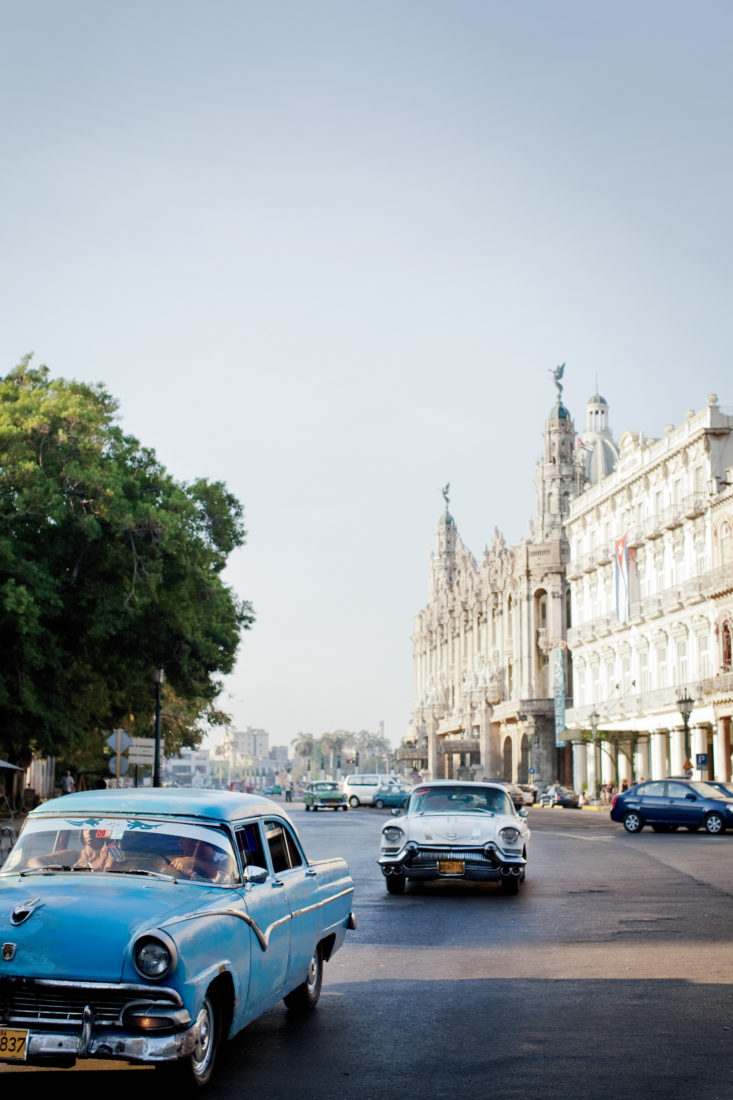
Photo: Eric Kiel
Relics of Detroit’s golden age zoom past Havana’s Parque Central.
A thirty-minute walk down the Malecón from Habana Vieja put us at the Hotel Nacional, where we met up with Richard and two other friends for drinks. Essentially unchanged from when my parents honeymooned there in 1939, the Nacional was then and is now Havana’s signature hotel. It is a great, turreted, neocolonial/art-deco heap of a place, and if it is no longer the city’s best place to stay, its covered terrace overlooking a vast lawn sweeping down toward the Malecón and the sea is still the best place, maybe in the universe, to drink a gloaming mojito or two. The walls along the hotel’s Moorish lobby and in the bar are hung with photos of some of the hearties who have enjoyed that pleasure and others here before you: Errol Flynn, Lucky Luciano, Muhammad Ali, Rocky Marciano. Fidel, of course. And, of course, Ernest Hemingway.
Since its colonial days, the city has been a favorite of hedonistic, high-testosterone males, and few have reveled in it more than Hemingway. During the two decades he lived in Cuba, Havana was for him every bit the move- able feast Paris had been earlier, and no first trip to the city would be complete without visit- ing a few of the places where he bellied up to the groaning board. Our first day in Havana, we started with a visit to his home, the Finca Vigia, some thirty minutes from downtown in the village of San Francisco de Paula.

Photo: Eric Kiel
Time Warp
Hemingway’s library at Finca Vigia, just as he left it in 1960.
Hemingway bought the off-white stucco house and its hilltop property in 1940. All of its contents were given to “the Cuban people” when he moved back to the United States in 1960. The house’s interior remains exactly as it was on the day he left—clothes hanging in the closet, books beside the toilet. It is all powerfully evocative of the life he lived there; and since you can view it only from the outside through open doors and windows, the experience feels almost uncomfortably voyeuristic—as if you were waiting for Ava Gardner to stroll in from one of the nude swims she liked to take in the pool. That pool is still there, though empty—a short walk through ceiba, casuarina, and banyan trees, between the headstones of four of Hemingway’s dogs, and the dry-docked Pilar, his beloved thirty-eight-foot black-oak big-game boat, with its handsome green decks and polished wood fighting chair, outriggers, and bridge.
Hemingway fished the Pilar out of the seaside village of Cojimar, a twenty-minute drive from his house. We had a good late lunch there of grilled shrimp and octopus at a restaurant called La Terraza, whose sunny dining room looks out on the harbor, and whose walls are crowded with pictures of Hemingway feasting and drinking there after marlin fishing and before he had his chauffeur drive him into town for more feasting and drinking. More often than not, that was done at El Floridita, to which we also repaired after lunch.
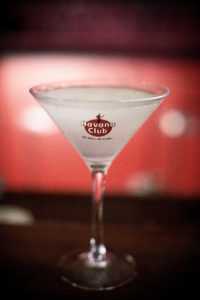
Photo: Eric Kiel
A daiquiri at El Floridita.
El Floridita is the only bar I’ve ever been in where I could envision myself starting to drink in the morning and staying all day. Everything about it—the good salsa band, the metal chairs and red tables, the long, gleaming wooden bar beneath a mural of sailing ships in Havana’s harbor—puts you in a cheery, bibulous mood. The place is famous for its daiquiris, particularly the insidiously delicious Papa Doble, made with grapefruit juice and a double shot of rum. At the far left end of the bar sits a bronze life-size statue of Hemingway, his eyes a little bleary, as no doubt they were when he set the record here of thirteen Papa Dobles in one sitting. Four of us together didn’t come close, but we left El Floridita as Hemingway usually did, feeling the world was a better place for our having been there.
San Cristóbal de La Habana was established on its present site in 1519 by Spanish conquistadores, who took Cuba from the Taino Indians. Since then it has been home to pi- rates, white Haitian coffee planters, West African slaves, sugar millionaires, American mafiosi, and despots and revolutionaries of every stripe. It has been razed by French corsairs, sacked by privateers, forcibly occupied by Britain and the United States, and shot up in three revolutions. Like a Russian czarist after 1917, the city has been fabulously wealthy and abjectly poor, a dissolute capitalist and a disenfranchised victim of totalitarianism.
Today the face of the city is a riveting palimpsest, with all its tumultuous, incongruous history and potpourri of cultural influences pushing through the quotidian everywhere you look. Of all the discordant visual impressions that Havana assaults you with—of old-world grandeur and third-world decay; elegance and skankiness; gaiety and desperation—the discordancy itself may be most definitive. What the face of present- day Havana has that stays with you is unhomogenized, uningratiating character—of a sort that Ethan compared to that stamped on the face of his friend Vanessa Redgrave, meaning it as a compliment to both.
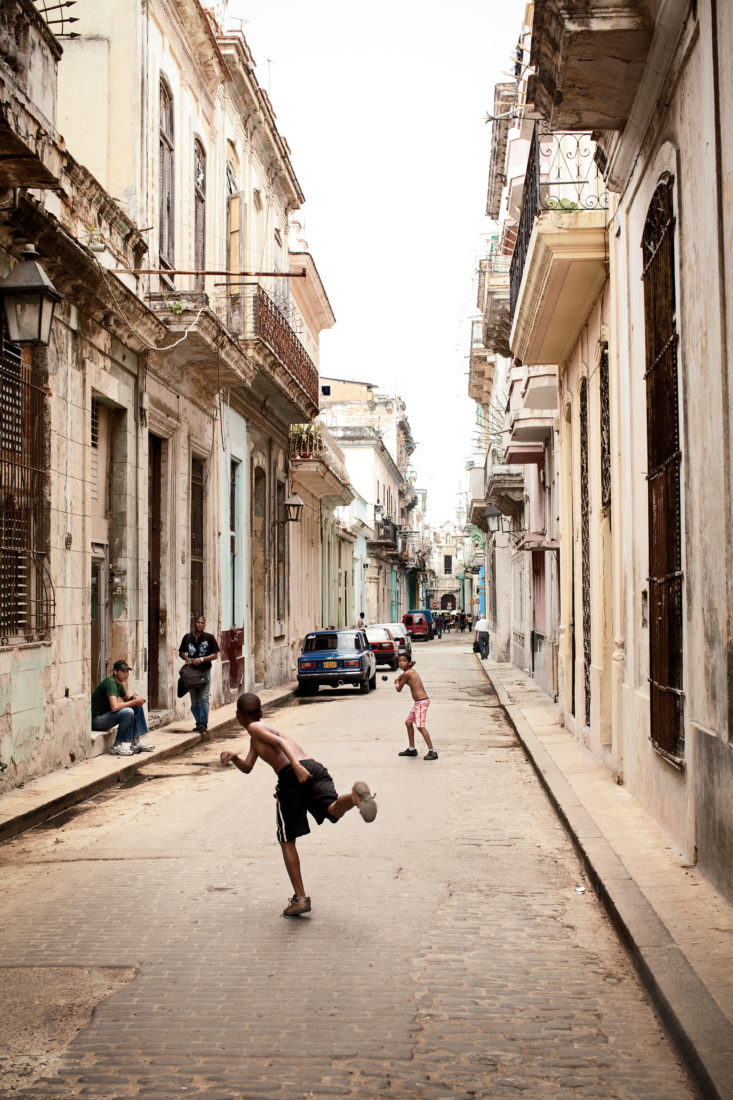
Photo: Eric Kiel
Major league hopefuls play stickball in Havana.
Nowhere is that character more on view than in Habana Vieja, the colonial heart of the city through which we took a four-hour walking tour on our last day. That day happened to be April 17, the fiftieth anniversary of the failed Bay of Pigs invasion by exiles trained and backed by the United States. Every Havana resident who was not working was expected to show up at a celebratory rally and parade at the Plaza de la Revolucion. Reportedly, more than a million did, but Habana Vieja was still crowded. There was a guy singing opera, players of flutes, accordions, and guitars, hookers and magicians and fruit peddlers. Most of these were working—moonlighting, as most Cubans do, at one or more tourist-oriented hustles to supplement their incomes. But neither they nor the relatively few beggars we encountered in Havana were bothersome about it, even to yanquis. As an American who travels a lot, I am used to people not liking me and expecting to get paid for it. But even on this day, and despite the petulant fifty-one-year-old trade and tourism embargo the United States continues to impose against Cuba, there was not a hint of anti-American rancor on the old music-washed brick and cobble streets.
We walked along those streets to each of four beautiful squares that grace Habana Vieja—the oldest of which, the Plaza de Armas, dates from the 1520s—admiring what must be the Americas’ finest collection of colonial, baroque, and art deco buildings: ravishing cathedrals, museums, palaces, and casas, many well restored, others crumbling. In such a setting, you might expect the throbbing, sensual, loamy-smelling street life of Havana to play like a punk-rock festival in a porcelain museum. But somehow it seemed as implausibly at home there as the drying wash hanging from the windows of an eighteenth-century governor’s palace, converted to five-dollar-a-month apartments.
That night we had the best meal of our stay in Havana, at Atelier, a rooftop paladar, then moseyed over to a refined old building near the Parque Central that served as the popular American Club in the 1940s and ’50s. It now houses another fine paladar called (like the restaurant in Cojimar) La Terraza, and a small jewel-like bar in which I could happily be locked to commit slow, euphoric suicide by cigar and rum. The rum was eleven-year-old Santiago, the cigars libidinously rolled Montecristo #2’s. The walls were dark wood, the armchairs old leather, and the only other patrons two vivid young Cuban women who sat on a sofa drinking espresso with nail-examining languor beside a European geezer who was fast asleep. (A good percentage of the more than two million tourists who visit Havana every year come exclusively for the type of recreation that had evidently worn this fellow out.) There was also a bottle-juggling bartender, a three-hundred-pound manager/bouncer named Billy who looked like he might have been a great-grandson of Al Capone’s, and a very good duo of son musicians.
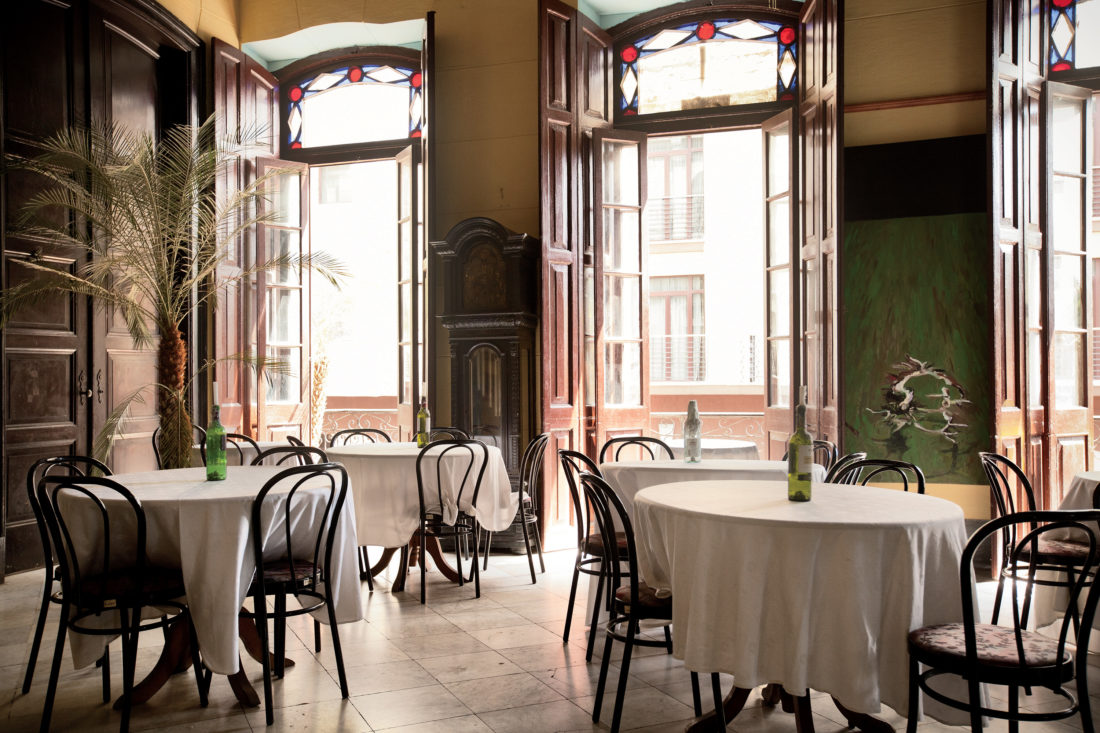
Photo: Eric Kiel
Vintage Elegance
Tropical sunlight filters into La Terraza, the city’s one-time American Club.
There was still the Malecón to walk under a full moon; then maybe dancing, or the late, still-great cabaret show at the Tropicana. For the moment, though, I was profoundly content with my cigar and rum; and as we watched the bartender get four and then five bottles aloft at once, I was revisited by my Epiphanic Metaphorical Insight in the cigar factory. Which was this: If as a visitor to this city you are more depressed than excited by it, it will not be Havana’s fault. Despite the Castro factory conditions, the product it turns out is a complexly satisfying, world-class robusto; and it will meet any attitude you care to bring to it with a welcoming grin and a flicking tongue.
A final note: I checked up on them, and that British girl is now happily married to the cigar roller and living in Habana Vieja.


